文化中国︱传统乐器——八音 Traditional musical instruments——Ba Yin
八音

“匏土革,木石金。丝与竹,乃八音。”
这朗朗上口的四句话出自《三字经》
我国古人将乐器按其制作材料分为八类,
既金、石、丝、竹、匏、土、革、木
谓之八音。
《乐记》中曾记载为:
““土曰埙,竹曰管,革曰鼓、匏曰笙,
丝曰弦,石曰磬、金曰钟、木曰柷。”
Pao, earth, leather, wood, stone and jin. Si and bamboo are Ba Yin.
These four catchy sentences come from the Three-Character Classic.
Ancient Chinese people divided Musical Instruments into eight categories according to the materials they were made of.
It contains gold, stone, silk, bamboo, pao, soil, leather and wood
It is called eight tones.
It was recorded in the Book of Music that:
The earth is the Xun, the bamboo is pipes, the leather is drums, the pao is sheng,
Chuk is silk, chime is stone, jin is zhong and wood is zhu.
八音 ●金

金,指“钟” 。
“钟”是我国古代重要的打击乐器。
用青铜铸成,音色清脆悠扬,穿透力强,
八音之中称之为“金”。
编钟,又叫歌钟,
是把钟依大小,有次序挂在木制钟架上。历代的编钟形制不一,枚数也有异。
古代用于宫廷雅乐,
每逢征战、宴享、朝聘和祭祀
都要演奏编钟。
它可以用于独奏、合奏
或为歌唱、舞蹈伴奏。
Jin means Zhong.
Zhong was an important percussion instrument in ancient China.
Cast in bronze, the tone is clear and melodious, strong penetration,
It is called Jin in Ba Yin.
Chime bells, also known as song bells,
The clock is hung on a wooden clock stand in order of size. Chime bells of different dynasties have different shapes and numbers.
Used in ancient court music,
Every war, feast, imperial engagement and sacrifice
They all have to play chimes.
It can be used for solo or ensemble
Or for singing, dancing accompaniment.
八音 ●石
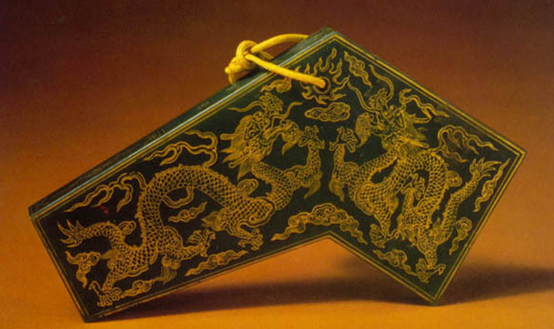
磬”是我国古代的打击乐器。
用磬石制成,八音之中被称知为“石”。
早期被用于先民的祭祀活动中;
后被历代帝王用于各种宫廷娱乐。
磬的声音清远而剔透,
笼罩着一层神秘的色彩,
传说聆听磬声者会吉祥如意。
《广异记》记载“磬声一振,鬼神必闻。”
磬是象征身份、地位的礼器。
古代击磬者,必先沐浴、焚香、朝拜,
然后才得击磬。
Qing is an ancient Chinese percussion instrument.
Made of chime stone, eight in known as stone.
Early was used in the sacrificial activities of the ancestors;
Later, it was used by emperors for various palace entertainment.
The sound of the qing is clear and clear,
Shrouded in a veil of mystery,
It is said that those who listen to the chime will have good luck.
Wide different record recorded Qing sound a vibration, ghosts and gods will hear.
Qing is a symbol of identity, status of the ritual.
In ancient times, those who struck chime would first bathe, burn incense and worship,
Then who are allowed to hit the chime.
八音 ●丝
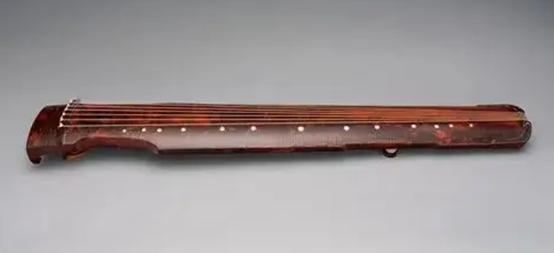
“丝”又可分为“琴”与“瑟”
“瑟”,古代弹弦乐器。
我国最早的弹弦乐器之一,
其历史久远。
古代乡饮酒礼、乡射礼、燕礼中,
都用瑟伴奏唱歌。
瑟弦数为二十三至二十五弦不等。
“琴”,我国古老且富有民族特色弹拨乐器。
琴在西周时期已广泛流传,
它经常与瑟或加上鼓等乐器在祭祀时演奏。
Si can be divided into qin and se.
Se, the ancient stringed instrument.
One of the earliest stringed instruments in the country,
It has a long history.
In the ancient village drinking ceremony, village shooting ceremony and swallow ceremony,
They all sing to the accompaniment of serra.
The number of strings varies from 23 to 25.
Qin, our ancient and rich national characteristics of plucked instrument.
Qin had been widely spread during the Western Zhou Dynasty.
It is often played with seri or with drums and other instruments during sacrifices.
八音 ●竹
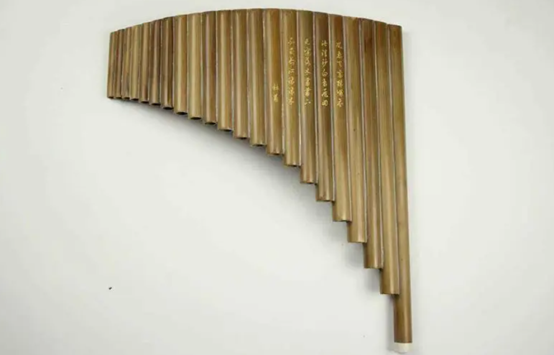
“竹”,有排箫与篪
排萧,人们常以为是舶来品,
其实在春秋时代,
我国已有制作精美、发音灵敏的排萧。
当时称做“籁”或“篙”,
秦汉以后称之为箫。
“箫韶九成,凤凰来仪”
以排箫演奏的远古韶乐﹐
甚至可以招来凤鸟。
“篪”,我国古代的吹管乐器,
两端均为闭口,无膜,
音色空旷、飘逸。
篪是一种似笛非笛的竹管横吹乐器。
由于失传以久,
人们一直难以知道它的实物真貌。
Bamboo, there is Pai Xiao and Bo
Shunting is often thought of as a foreign product,
In fact, during the Spring and Autumn Period,
Our country has exquisite production, sensitive pronunciation of the Xiao.
At that time, it was called sound of music or pole,
After Qin and Han dynasties, it was called Xiao.
When Xiao is played, phoenix comes
With the ancient music of the pan flute,
You can even bring in phoenix birds.
Bo, an ancient blowing instrument of our country,
Both ends are closed, without membrane,
The tone is empty and ethereal.
Pak is a bamboo pipe crossblown instrument similar to flute but not flute.
Having been lost for so long,
It has been difficult to know what it really looks like.
八音 ●匏
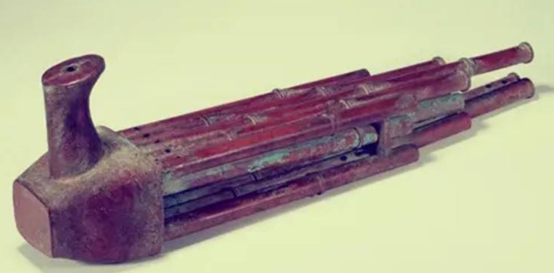
匏,指笙。
笙是一件非常古老而科学的吹管乐器。
起源虽无实物留存,
但文献记载可追朔到非常早的年代。
从现在苗族葫芦笙的结构来看,
笙的出现,应该是非常早期的。
笙斗用天然的葫芦“匏”,
簧片用竹篾青制造,
所以八音之中,它归为匏。
Pao refers to the sheng.
Sheng is a very old and scientific wind instrument.
Though no physical origin remains,
But the documentation goes back to very early times.
Judging from the structure of the Lusheng of the present Miao nationality,
The appearance of Sheng
should be very early.
Sheng Dou used natural gourd Pao,
The reed is made of green bamboo strips,
Therefore it is given as pao
among the Ba Yin.
八音 ●土
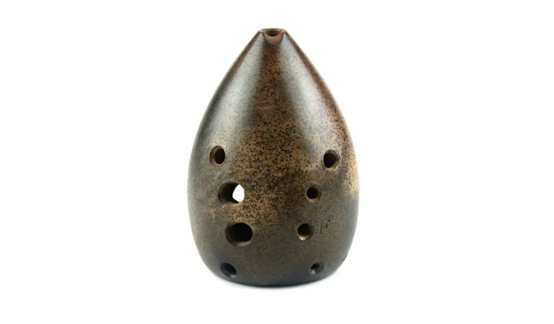
土,指埙。
埙是中国迄今所发现的
最早的吹奏乐器之一,
埙的音色幽深、悲凄、哀婉、绵绵不绝,
具有一种独特的音乐品质。
古人将埙的声音形容为立秋之音,
更使我们体会到一幅
朦胧而另人神往的艺术画面:
秋天是金黄色的,另人深思的;
时光流逝,又有一种淡淡的悲凄和感伤。
The earth, the xun.
Xun is what China has found so far
One of the earliest wind instruments,
The sound of the Xun was deep, sad, mournful and endless,
It has a unique musical quality.
The ancients described the sound of the Xu as the sound of the beginning of autumn,
Let us appreciate a picture
A hazy and evocative image of art:
Autumn is golden, another person thought;
As time went by, there was a touch of sadness.
八音 ●革
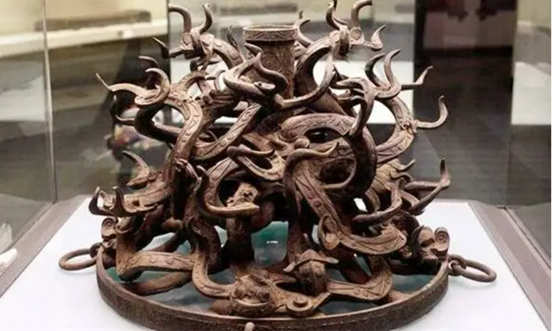
建 鼓 鼓 座
革,指建鼓。
建鼓整体成圆堆形,
承柱的鼓座系用青铜铸成,
其造型与铸艺之精令人叫绝:
群龙穿插纠结,龙蟠龙、龙缠龙,
实难准确地弄清其数量和来龙去脉。
鼓柱置于其上,
中悬椭圆形木腔皮鼓,
颇有雄浑之风。
Leather refers to Jian Gu.
The whole building drum is in the shape of a round pile,
The drum base of the supporting column is cast in bronze,
Its fine shape and casting art is amazing:
Dragons tangled, dragons flat, dragons wrapped around dragons,
It's hard to know exactly how many and why.
The drum column is placed on it,
Central hanging oval wood cavity leather drum,
It has a strong bearing.
八音 ●木

木,指“柷(zhù)”。
“柷”,古代打击乐器。
由木制,
形如木升,
上宽下窄,
用木棒撞其内壁发出声音,
用来示意乐的起始。
历代宫廷雅乐都有用到柷。
Wood means zhu.
Zhu refers to ancient percussion instruments.
Made of wood,
Shaped like a rising tree,
Wide at the top and narrow at the bottom,
With a stick against its inner wall to make a sound,
Used to signal the beginning of music.
Zhu is palyed on ancient royal music.
参考资料:
湖北省博物馆官网
图片来源于网络
(策划 /国际学院石牌校区学生党支部、文字/罗纪 陈俞涛、图片/陈俞涛、编辑/陈俞涛、初审/方葳、复审/刘明、终审/邓永忠)



